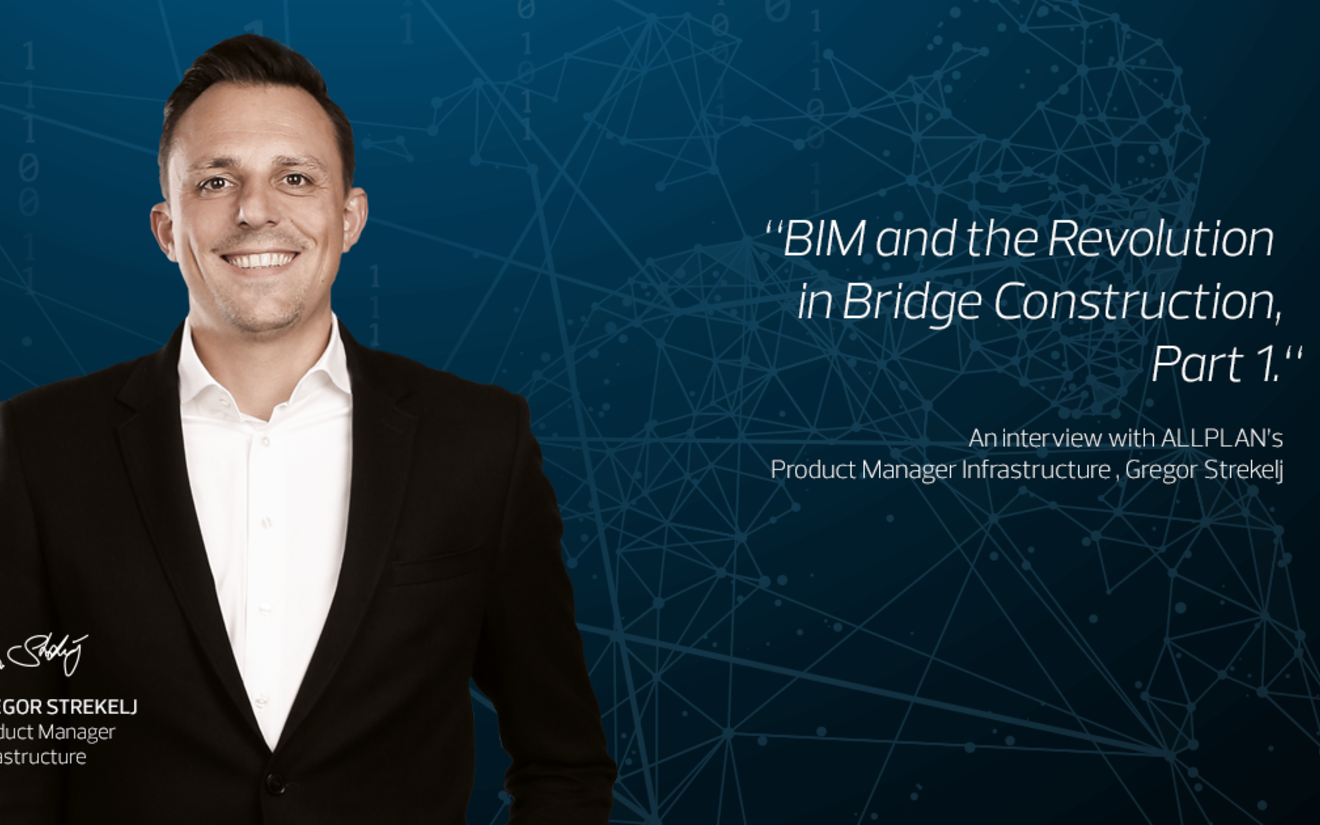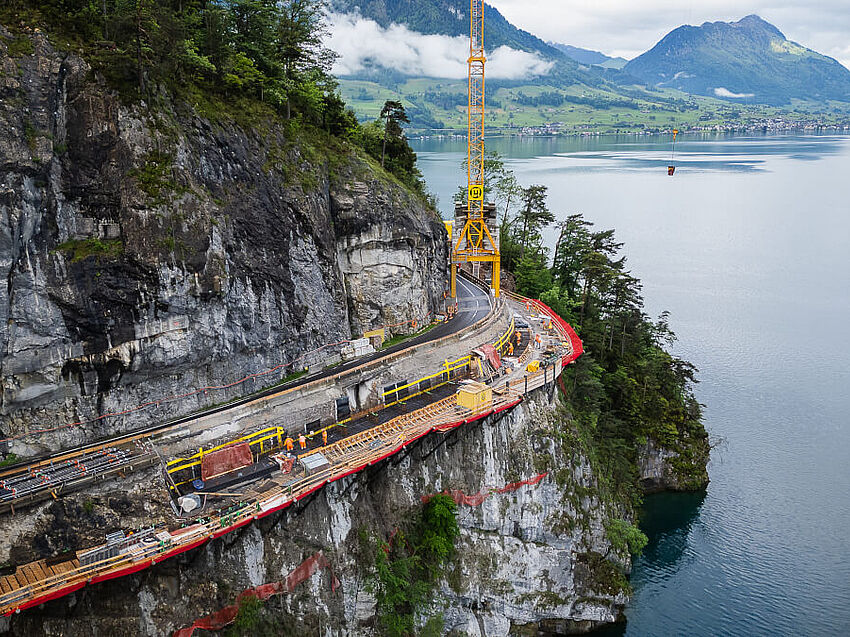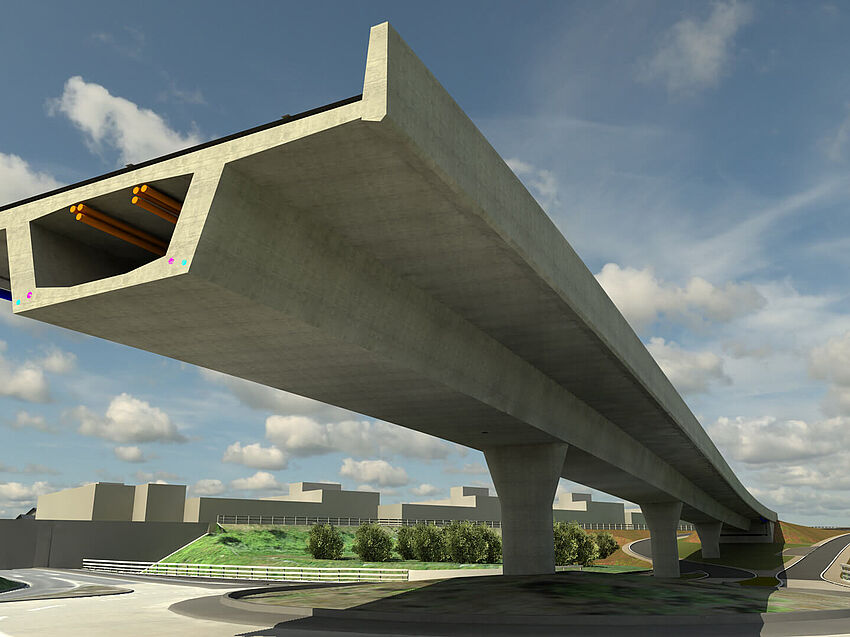BIM in Action: How BPK Mosty is Transforming Infrastructure Design with ALLPLAN
Bridges are an essential part of our infrastructure. In the first part of our conversation with Gregor Strekelj, Product Manager at ALLPLAN Infrastructure, the experienced bridge engineer explains the challenges of today's bridge construction and how BIM helps to overcome them.
What are the biggest challenges in bridge construction?
Bridges are complex structures: in the geometric sense, but especially in their structural behavior during the construction process, and in the use of different construction technologies, which must correspond to both the bridge type and the terrain conditions. Many variants are worked out until the final one and each change can cause time delays. Comparing variants to determine the best quality version is correspondingly time-consuming and labor-intensive. Due to lack of time in the design process, this is often avoided or not sufficiently thought through. This can have a negative impact on the basic quality of the bridge. Nevertheless, modifications as well as time-consuming synchronizations are part of the daily business in bridge design. A lack of a "single source of truth" for the project, misunderstandings and possible inconsistencies are a major problem in the bridge construction industry, especially due to the globalization of projects.
On December 31, 2019, the Federal Highway Administration reported that of 617,083 bridges in the US, 291,339 were in fair condition, and 46,163 were structurally deficient.1 Globally, the situation is similar or worse. The reasons for this low quality are manifold. On the one hand, external influences such as a sharp increase in stress due to higher traffic volumes, temperature fluctuations or corrosion caused by road salt play a role here. The maintenance of bridges is directly affected by this.
In addition to these external factors, which bridge construction can only influence with difficulty if at all, there are also construction and planning-related causes that lead to faulty construction from the very beginning. The aforementioned lack of a singular "source of truth" for the project, inconsistent design data from different data sources and formats from different parties lead to problems later in the execution due to lack of time for synchronization. Another challenge is to fit new bridges into the existing infrastructure.
Do you see any other problem areas?
Time and Cost. Research by economic researchers has found that nine out of ten infrastructure projects are not completed within the estimated time and cost. In bridge construction, cost overruns are around 30 percent. Here, too, the reasons lie primarily in the complexity of the bridges, but also in the work processes, which are naturally also prone to errors, thus closing the circle to quality. If you don't invest enough time, more errors occur. If errors have to be corrected again and again during the planning phase, this also costs time and money. Even more costly and time-consuming are errors that are only discovered on the construction site. All this is all the more problematic because schedules are becoming increasingly tight.
Is Building Information Modeling a solution to these problems?
BIM is definitely the right solution for these problems, yes. But not just any BIM. In structural engineering, it has now proven practical for various reasons to use several specialist models instead of a common model, which are later merged and checked for collisions. In bridge construction, however, the situation is different. In our view, the enormous complexity here clearly requires a "single source of truth“. This means that we need a single parametric 4D model that bidirectionally combines geometry, structural analysis and design. This is exactly what we have achieved in a groundbreaking way with ALLPLAN Bridge.
BIM also means a change in data transmission, data requirements and the resulting workflows. With the openBIM approach, the various data formats are harmonized and all those involved in the design process can obtain information about the current status at any time. Inconsistencies and collisions already occur in the design phase and can be eliminated here in advance - not just on the construction site. In this way, time and cost overruns can be avoided while optimizing the quality of the bridges. As an OpenBIM provider, we follow the latest IFC requirements for bridge construction.
Ultimately, it is crucial that BIM not only exists in theory, but is also lived. This begins with planning and ends on the construction site. Step-by-step digitalization of the construction site increases the consistency of digital process chains and enables the full potential of digital planning to be exploited.
Learn more in part 2 of our interview.




